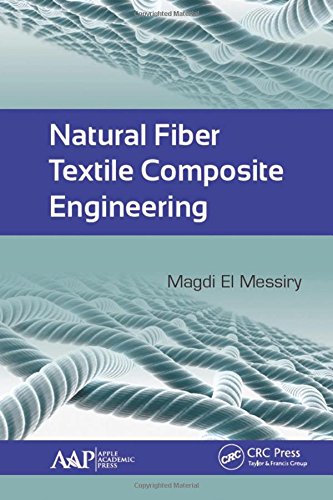

Most ebook files are in PDF format, so you can easily read them using various software such as Foxit Reader or directly on the Google Chrome browser.
Some ebook files are released by publishers in other formats such as .awz, .mobi, .epub, .fb2, etc. You may need to install specific software to read these formats on mobile/PC, such as Calibre.
Please read the tutorial at this link: https://ebookbell.com/faq
We offer FREE conversion to the popular formats you request; however, this may take some time. Therefore, right after payment, please email us, and we will try to provide the service as quickly as possible.
For some exceptional file formats or broken links (if any), please refrain from opening any disputes. Instead, email us first, and we will try to assist within a maximum of 6 hours.
EbookBell Team

4.3
48 reviewsNatural Fiber Textile Composite Engineering sheds light on the area of the natural fiber textile composites with new research on their applications, the material used, the methods of preparation, the different types of polymers, the selection of raw materials, the elements of design the natural fiber textile polymer composites for a particular end use, their manufacturing techniques, and finally their life cycle assessments (LCA). The volume also addresses the important issue in the materials science of how to utilize natural fibers as an enhancement to composite materials. Natural fiber-reinforced polymer composites have been proven to provide a combination of superior mechanical property, dielectric property, and environmental advantages such as renewability and biodegradability. Natural fibers, some from agricultural waste products, can replace existing metallic and plastic parts and help to alleviate the environmental problem of increasing amounts of agriculture residual.
The book is divided into four sections, covering:
The first section of the book deals with the application of textile composites in the industry and the properties of the natural fibers, providing an understanding of the history of natural fiber composites as well as an analysis of the different properties of different natural fibers. The second section goes on to explain the textile composites, their classification, different composite manufacturing techniques, and the different pretreatment methods for the natural fibers to be used in composite formation. It also analyzes the composite material design under different types of loading and the mechanism of failure of the natural fiber composite. The effect of the fiber volume fraction of different textile structures is explained.
The third section of the book, on composite manufacturing techniques and agriculture waste manufacturing, concerns the natural fiber composite manufacturing techniques, agricultural waste, and the methods of their preparation to be used successfully in the composite, either in the form of fibers particles or nanoparticles. The book then considers the testing methods of the different composite components as well as the final composite materials, giving the principle of the testing standards, either distractive or nondestructive.
This book attempts to fill the gap between the role of the textile engineer and the role of the designer of composites from natural fibers. It provides important information on the application of textile composites for textile engineers, materials engineers, and researchers in the area of composite materials.